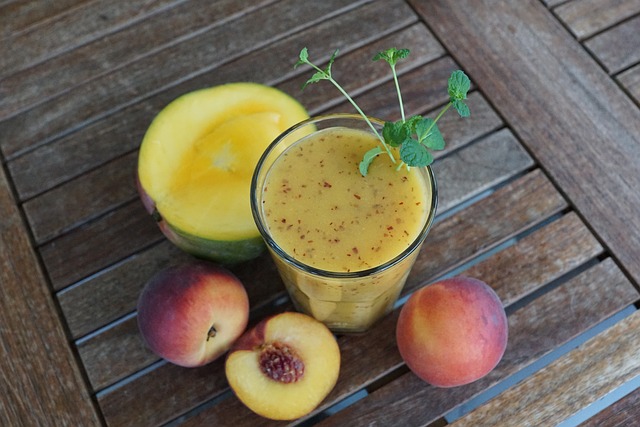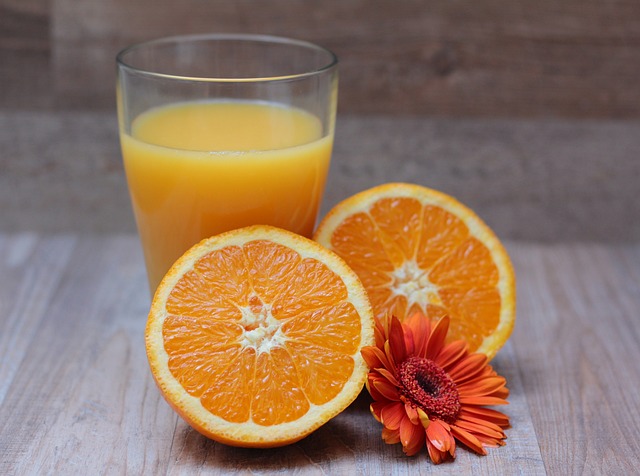leafy greens
Juice From The Earth, Instead Of The Can

Do you know what benefits juicing can bring? Experienced juicers will tell you that they experience benefits, such as increased energy level, a faster metabolism, better physical stamina, less food cravings, and an improvement in their general health. You crave more information about juicing, right? You have found the right place!
If you juice dark, leafy greens like spinach, add some cucumber. While leafy greens are rich in nutrients, they don’t make for the tastiest of juices. Cucumber juice has a fresh taste, masking the taste of dark vegetables somewhat and giving the juice it a bright kick. It also contains many essential nutrients, especially when the skin of the cucumber is left intact.
When making juices to foster better health, select darker green produce for the foundation of your drinks. You will want the juice to be between 50 to 75 percent spinach, chard, broccoli or another similar vegetable for ultimate health benefits. To give the juice a palatable taste, round it out with your favorite fruit juice.
Use the ripest and sweetest apples when you make apple juice. Make sure to get rid of the bruises if you plan on using bruised apples. Apples, such as Gala, Rome, Red Delicious, and Rome, are sweet and make richer, more flavorful juices.
Some very effective ingredients for juicing concoctions are chard, parsley, broccoli, kale and spinach. Try to use at least 50-70% greens in your juices, while the rest goes to other veggies and fruits for flavor. Fruit juice generally contains more sugar than the juice from greens and usually isn’t as healthy for you.
Enjoy your juices, and take your time when you drink. Take time to savor your juice, and taste all the flavors. Enzymes in your saliva play an important role in the digestion process.
Juicing vegetables is a great way to get healthy foods into a child who won’t eat them whole. A lot of kids do not like vegetables. You can make a great tasting vegetable and fruit juice, and the kids won’t know they’re eating vegetables.
Keep the juicer on your kitchen counter in plain sight. This will ensure that you remember to use it often and get the most benefits from it. Seeing it on the counter will remind you to use it daily.
Coffee Filter
Use a new coffee filter to easily separate unwanted pulp from your delicious juices. Only use a filter, of course, if you find the pulp unpleasant and would prefer it not be in your juice. Thankfully, the juice can be strained using a cheesecloth or a coffee filter. Both of these can eliminate the majority, if not all, of the pulp.
Choose a juicer that you can easily take apart and clean. You won’t have the time to juice if it ends up taking you a half hour just to get a glass made! Clean your juicer right after using it since moist pulp is easier to get rid of.
Note your body’s reaction to drinking certain juices. Some fruit juices will not work with your system. If one juice makes you uneasy or queasy, figure out what it was that caused that reaction. Once you’ve determined this, use a small amount of the ingredient, and train your body to get used to it.
Everyone knows vegetable and fruit juice is healthy, but did you know that juices containing phytochemicals are able to reduce the amount of carcinogens found in your body? When juicing, use lots of phytochemical-rich foods.
If you are getting older and starting to feel the negative effects of your age, starting a juicing habit can make you feel younger. Fresh juicing your drinks, packs so many nutrients in one glass, which improve memory, reverse the damage of free radicals and ease your joint pain, among other things.
Drink up immediately after juicing. You should be aware that some of the nutritional value is lost once you make the juice. If you wait too long, the nutrients will start to disappear. It is therefore advisable to drink your juice as soon as possible.
Cucumber juice has excellent health benefits for both your hair and skin. Large quantities of silica are contained in Cucumbers. Silica can also bolster the strength of connective tissue while also helping muscles, ligaments and bones.
The sooner you drink fresh juice, the better. It’s best to drink the juice within minutes of making it.
Don’t add too many different ingredients to your juices. You don’t need to raid the produce section to get a tasty and healthy juice. Choose a few, perhaps just 2 or 3, of your favorite vegetables and some apple to sweeten it up. You should do the same thing when you make fruit juice blends. When you put together a fruit or vegetable drink with a few different varieties, it will taste wonderful, with each separate flavor shining through.
Now that you’ve learned more about some of the benefits of juicing, we hope that you’ll consider juicing as a means to improved health and quality of life! There are a variety of delicious recipes for juicers, and you’ll doubtless find it easy to incorporate many of them into your daily routine.
Juice Your Way To A Healthier You With These Tips

Fresh juices are an excellent means of getting more fruits and vegetables into your diet. When you juice fresh fruit or veggies, they become a nutrient-rich beverage. Read this article to learn more about juicing.
Leafy Greens
Use cucumber as an additive when juicing dark leafy greens. A lot of leafy greens have a strong flavor. Cucumber will mask the unpleasant taste and add refreshing flavor of its own. Cucumber, especially unpeeled cucumber, contains a variety of healthy nutrients.
Leafy greens, such as kale or spinach, are among the healthiest ingredients for juicing. For maximum health benefits, have at least half of the ingredients in your juices be these greens, and add other vegetables for flavor. Juices made from fruit often have more sugar and fewer nutrients than those with leafy greens.
Consider you juice to be a whole meal. Once you know exactly how much food goes into a single glass of juice, it will be easy to see that you can drink it in place of a meal. If you drink your juice by itself, your body will absorb its nutrients more quickly.
Colors can be your guide to good nutrition. Highly pigmented fruits and vegetables are often brimming with nutrition, from gorgeous greens to radiant reds and all the colors in between. These differences give you a fuller nutritious experience, as well as a wide range of tastes.
Coffee Filter
If you don’t want pulp in your drink, use a coffee filter. Only use a filter, of course, if you find the pulp unpleasant and would prefer it not be in your juice. In addition to a coffee filter, cheesecloth will serve as a useful filter in this application.
Juicing is a great way to stock up your fridge but you should bear in mind that, if you don’t take precautions, refrigeration can cause color changes in the juice. If juice has transitioned from a nice bright red to a dull brown, no one will drink it. To protect the appealing colors of your juices, add a few teaspoons of lemon or lime juice to the blend. The small amount of added lemon juice will allow the juices you make to keep their vibrant colors.
Listen to your body as you drink various juices. Perhaps some of the juices you make will not be processed well by your body. If you experience queasy feelings or stomach churning when drinking a certain juice, you should check out the ingredients, and attempt to determine the items that are new and are rarely consumed. If you pinpoint the problem ingredient, you can drink just a little of it to get your body used to it.
Ginger is an incredible food which can help soothe gastrointestinal upset. Include it in your juices to add a bit of zip, as well as, a healing touch. Ginger is great with a combination anti-inflammatory as well as soothing any damage in the esophageal region, usually caused by acid reflux.
Fruit or vegetable juice can help prevent cancer or reduce its effects by removing carcinogens from the body. Clearly, it is worth your time and money to incorporate ingredients that are loaded with phytochemicals.
Try adding some juice to your diet if you are feeling old, fatigued or have aching joints. Juice can get the pep back into your life! Freshly made juice is rich in nutrients that can reduce your risk for developing illnesses, improve your memory and even fight off free radicals.
If you have specific nutritional requirements, it is in your best interest to explore different varieties of fruit that you may not ordinarily eat. If you never vary your routine, you will likely miss out on many key nutritious options. Apple juice is a great base for juices, and can disguise a multitude of tastes you may not like.
You can make juicing fun by getting the entire family involved in the process. Get a child to wash the produce, while an adult chops it up.
You should note that certain juices may alter the color of your teeth. This is extremely important because certain varieties of juices will stain your teeth. Carrot or beet juice is especially prone to doing so. If you have teeth that tend to stain, give them a brush after you drink your juice.
Using juices can fight constipation and eliminate waste from your system quickly, so try juicing vegetables and fruits that are high in nutrients and fiber. Using these fruits and vegetables in your juice on a regular basis will keep your bowel movements regular.
While green juices are known for their healthy properties, they’re also known for their unpleasant taste. They can be made delicious. Dark green vegetable juices can be mixed with other ingredients to improve their taste will still getting their nutritious goodness. For instance, lemons can give a punch to spinach juice, while apple juice can give spinach a sweeter flavor.
In conclusion, as a good way to get the recommended vegetable and fruit servings each day, you can try juicing. You can make delicious, highly nutritious juices by mixing together your favorite fruits and vegetables. Use the tips laid out in this article as a guide for starting to explore the nutritious and tasty world of juicing for yourself.